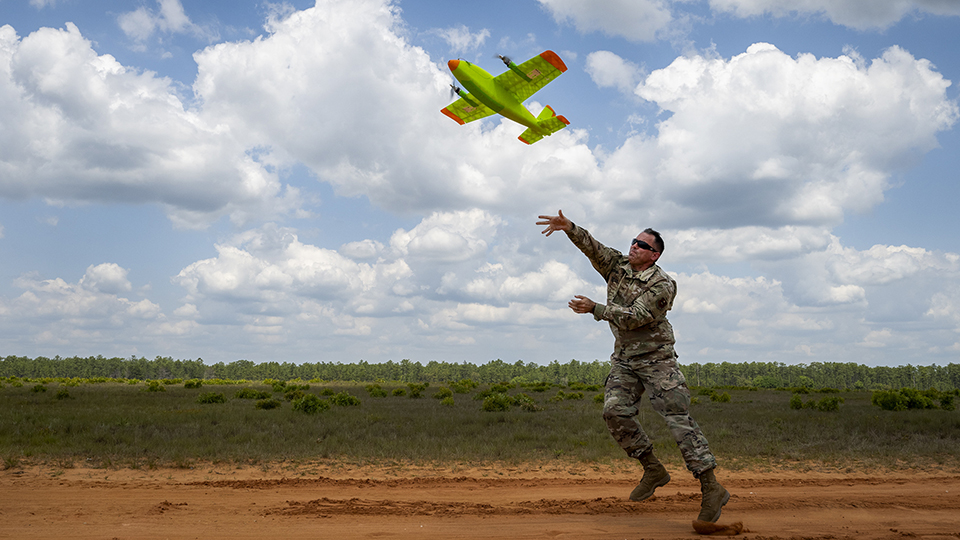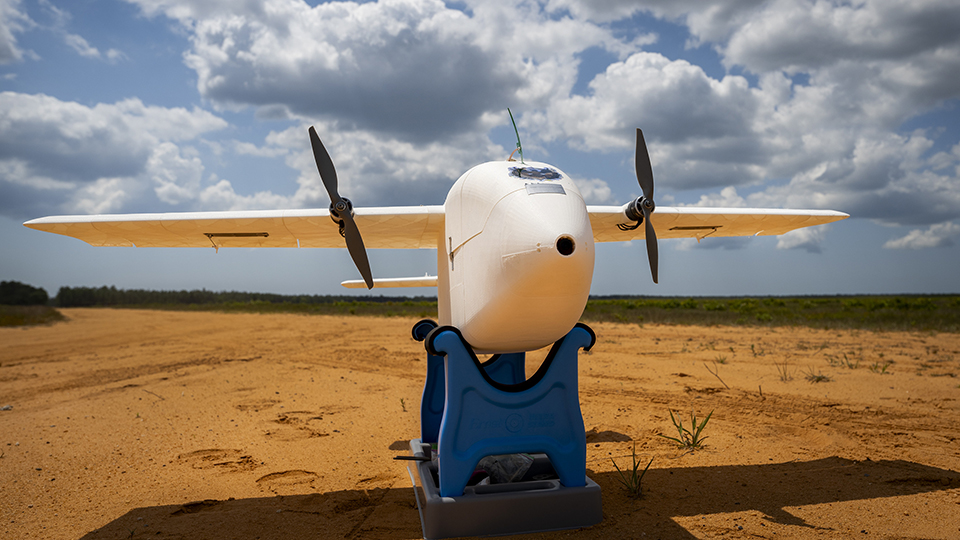How K-State taught engineer and U.S. Air Force colonel Dustin Thomas ’02, ’21 to solve problems – one innovative step at a time
“Don’t wait for permission — if you see a problem, start solving it.”
That’s one of the best pieces of advice Dustin Thomas ’02, ’21 has to offer the K-State
engineering students seeking to follow in his footsteps.
“You’re never going to feel completely ready, and you’re never going to be ‘good enough’
before you begin — whether that’s launching a startup, tackling a tough engineering
challenge, or even starting a family,” Thomas says. “But that’s no excuse to sit still.
No one is ever really ready. It’s the journey of solving the problem that makes you
ready.”
It’s advice that has served Thomas well both during his time studying mechanical engineering
at K-State, and in his current rank as a colonel in the U.S. Air Force. And these
problem-solving skills have also helped him prepare for a rapidly evolving future.
“With AI-assisted design, 3D printing and software-defined systems, we can finally
start matching the speed of innovation to the speed of the mission,” he said. “And
that future isn’t 20 years away. The shift has already started.”
Taking the first step
Thomas looks back with fond memories on his years at K-State, where he earned bachelor’s
and master’s degrees in mechanical engineering and participated in Air Force ROTC.
During his time as a student, he also met his wife, Amy Ashford Thomas ’01, and got
married, and his daughter was born during his senior year.
He says his time at K-State gave him curiosity, structure and confidence, and showed
him that it’s OK to go ahead and take the first step towards overcoming an obstacle
— even if the path ahead isn’t totally clear.
“The engineering program taught me how to solve complex problems by breaking them
down into manageable chunks,” he said. “One of the most valuable lessons I learned
was not to get overwhelmed when facing something hard. If you don’t know where to
begin, just start by defining the problem, listing what you know and what you assume.
That simple habit has carried me through some of the toughest situations — many of
which weren’t even technical.”
His experiences in K-State’s Air Force ROTC program also helped shape him as a leader
and learn how to work as a team.
“It was my first exposure to leading teams and understanding how different people
respond to different styles of leadership,” he said. “But to be honest, it also frustrated
me most of the time. My mindset didn’t always mesh with the rigid structure of military
training programs. It forced me to adapt — to shape myself to fit within something
far bigger than me. And that’s exactly why I joined the Air Force in the first place.”
Problem solving with a time crunch
All that experience led to Thomas’ recent involvement with a project called Black
Phoenix, which he calls “one of the most exciting things I’ve ever worked on.” The
challenge was to design, create, build and fly an unmanned aerial system within 24
hours.
Thomas worked on the project through an innovative military fellowship called Blue
Horizons. According to the U.S. Air Force, Blue Horizons is “part think-tank, part
incubator that promotes unconventional thinking and processes” and seeks to tackle
“Air Force problems with strategic impact.”
Thomas’ team partnered with a small startup based out of Los Angeles called Titan
Dynamics to see if they could write software to design a small airplane around a specific
payload and mission, use 3D printing to build it quickly and cheaply, and fly it …
all in the same day.
“The first time that aircraft took off, flew the mission, and came back, it felt like
watching the future arrive,” Thomas recalls. “But honestly, the best part wasn’t the
tech. It was the team. It was watching a small group of people come together to attempt
something genuinely hard — something we were told was on the ‘bleeding edge of crazy.’
As one of my teammates liked to say, ‘People are more important than hardware.’ That
experience confirmed something I’ve believed since my K-State engineering days: you
can solve almost any problem if you’re willing to break it down, take the first step,
and build the right team around you.”
>>>Learn more about the project.
Thomas said technology like artificial intelligence and 3D printing continues to advance
at a breakneck pace, and he is embracing the challenges — and opportunities — that
come as part of that.
“I’m now leading an organization that’s trying to transform how the Department of
Defense oversees the production of drones and robotics,” he said. “We’re exploring
ways to shift from traditional factory models to something faster, more distributed,
and closer to the point of need.”
Where new ideas are born
Thomas sees many possibilities ahead for the students currently studying engineering
at K-State, and he encourages them to take what resources they already have and look
for creative solutions.
“The tools are more accessible than ever, and you don’t need a massive lab or a billion-dollar
company to start building,” he said. “Some of the best innovation I’ve seen has come
out of garages, dorm rooms and messy little teams that just got to work. Big companies
are great for scale, but small teams are where new ideas are born.
“Also, remember this: innovation isn’t about coming up with something totally new.
There’s nothing new under the sun. Innovation is more like building a snowmobile out
of spare parts, taking pieces that already exist and combining them in a new way,
for a new purpose. The world doesn’t need more people waiting around for the perfect
idea. It needs more people who are willing to start building.”


